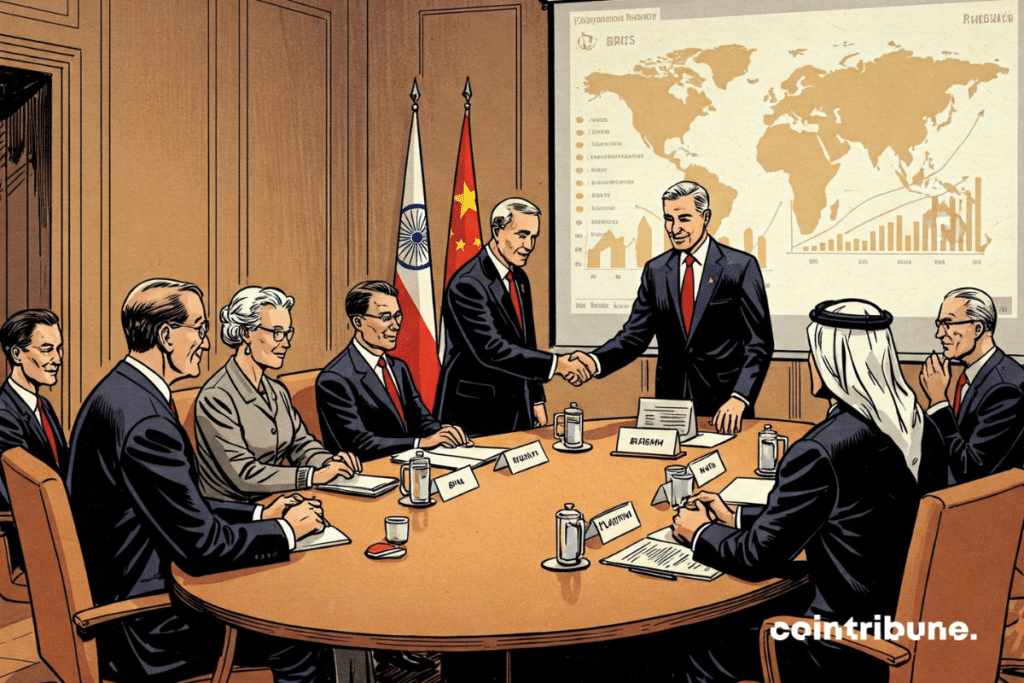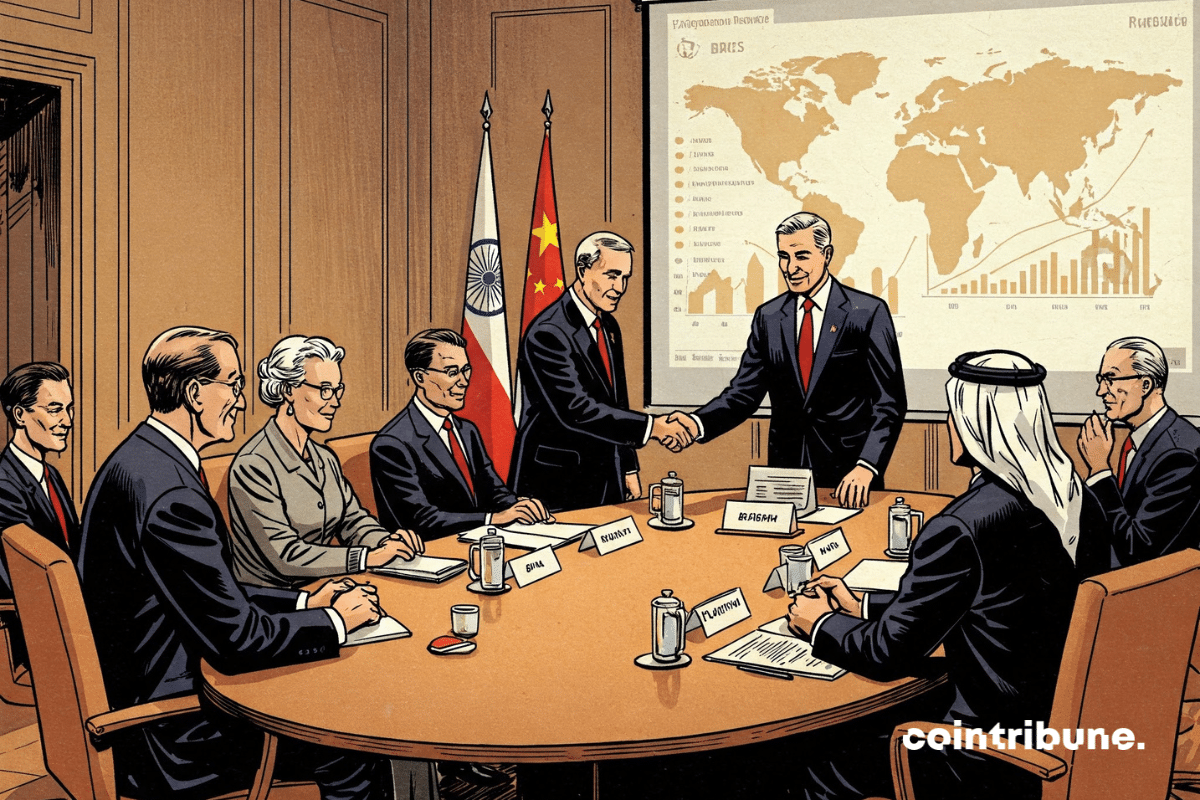While economic sanctions were aimed at suppressing Moscow, Russia recorded a growth of 4.1 %in 2023. This number confirmed by the Russian authorities will upset the security of Washington and its allies. In a war climate in Ukraine and re -management of monetary alliances, it reveals a return in the Russian economy an effective bypass strategy carried by BRICS. This data challenges the efficiency of Western sanctions and transforms geo -economic cards.

In short
- Russia will surprise the observer by publishing economic growth of +4.1 %in 2023, despite strong sanctions stored by the United States since 2022.
- Minister of the Russian Security Council, Sergey Shoig, says this growth could reach 4.3 %in 2024 before the slowdown in 2025 is planning 2.5 %.
- In response to Russia’s sanctions, it intensified its convergence with the BRICS and started the strategy of dedollarization.
- This commercial overwork weakens the dollar and strengthens the position of BRIC as a key player in the creation of a new world monetary order.
Unexpected growth despite sanctions
In his statement, the Secretary of the Security Council of Russia, Sergei Shoiga said that “Russian economy has increased by 4.1 %in the last two years”. According to his notes, this ascending trajectory continues to estimate 4.3 % per 2024, while the projection per 2025 expects slowing to 2.5 %.
This surprising performance comes in context, where the United States supported by its Western allies has imposed a number of heavy economic sanctions to strangle the Russian economy after the war in Ukraine. However, this coercive measures seem to have the opposite effect, which reveals an economy capable of resisting large external shocks.
Economic data confirm this robustness, especially in terms of foreign trade and financial stability. Shoigu emphasizes that Russia recorded a massive surplus of trade in 2023 and the remarkable growth of its exchanges:
- +3.8 billion dollars in foreign trade increases within one year;
- $ 716 billion in the total volume of trade in 2023;
- 146 billion dollars of surplus business balance;
- Reducing external and internal debt confirmed by the Russian authorities;
- The banking system considered “Resistant” Shoigu, despite the exclusion of Western financial networks.
This macroeconomic stability was by far marginal, accompanied by an effective internal reorganization, which showed that Moscow was able to anticipate and absorb the effects of sanctions. It is therefore a strategic challenge for countries that have tapped the rapid deterioration of the Russian economy.
BRICS lever: Structured bypass strategy
In addition to this economic performance, it was in commercial BRICS architecture that Russia had found a decisive relay. From the first waves of Moscow sanctions, it accelerated its integration into the BRICS alliance and performed the expected strategy of dedollarization.
This initiative allowed Russia to continue its international exchanges through local currencies. Russia rewrote its trade agreements in order to send and receive local currencies for cross guarantee transactions.
This reorientation was supported by partners such as China, India and Saudi Arabia, who saw in sanctions the opportunity to strengthen their own energy and financial autonomy.
For example, India saved $ 7 billion in a foreign currency by purchasing Russian oil at broken prices. As for Saudi Arabia, he imported Russian oil at a reduced price before redistributed it on the European market, giving it comfortable margins.
These practices, which allow the absence of a dollar in transactions, testify to the progressive but structured displacement of the World Gravity Center. The Russian strategy not only made it possible to bypass sanctions, but also consolidated multipolar dynamics, where the BRIC is located in the catalyst for new business standards.
In the medium term, this overwork could have an impact on monetary markets, the stability of the international monetary system and even on the use of a dollar in global trade. While the swift alternatives are discussed and that some BRICS members block their own payment infrastructure, the tendency to monetary fragmentation could speed up. In this context, cryptors could establish themselves as parallel or transient instruments in economics in search of monetary independence.
Maximize your Cointribne experience with our “Read to Earn” program! For each article you read, get points and approach exclusive rewards. Sign up now and start to accumulate benefits.
A graduate of the Toulouse and the Blockchain Consultant Certification certification holder and I joined the adventure of Cointribuna in 2019. I convinced of the potential of blockchain to transform many economy sectors, committing to raising awareness and informing the general public about how the ecosysty developed. My goal is to allow everyone to better understand blockchain and take the opportunity they offer. I try to provide an objective analysis of messages every day, decrypt trends on the market, hand over the latest technological innovations and introduce the economic and social issues of this revolution.
Renunciation
The words and opinions expressed in this article are involved only by their author and should not be considered investment counseling. Do your own research before any investment decision.







